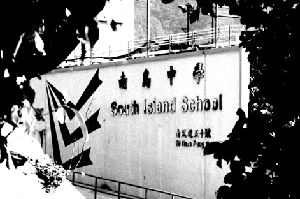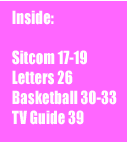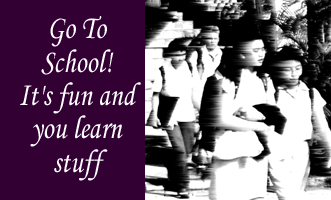
The first thing you notice when you look at a newspaper is the size! Traditionally, newspapers have been divided up into tabloids and broadsheets, broadsheets being the larger, more serious papers that you have to fold to read.
The gap between tabloids and broadsheets is a wide one. They look different, they contain different news, they have a different style of writing and they aim to attract different readers. However, the competition for readers is intense, and tabloids and broadsheets may steal tricks off each other in order to win the circulation war (eg) many broadsheet newspapers in Britain run 'Fantasy Football Leagues' which originated as a tabloid tactic. Some UK broadsheets have recently started producing a tabloid edition to further confuse matters.
Here are a few of the main differences:
Tabloids eg Standard
Broadsheets eg SCMP
- 'Popular' press
- Aimed at lower social groupings (C2,D & E)
- Bold layout (eg colour on the masthead, very bold typeface, easy to read), with large, dramatic pictures
- Shorter articles, more pictures, less 'in-depth' reporting
- Puns and jokes in headlines
- More focus on human interest stories, celebrity gossip
- Use of gimmicks such as bingo games, free travel tickets, phone-in surveys
- 'Quality' or 'serious' press
- Aimed at higher social groupings (A,B,C1)
- Plainer layout (no colour on the frontpage, smaller typeface suggests readers will make more effort to read it), and subtle, possibly smaller, pictures
- Longer articles, more detailed
- Serious headlines
- More focus on politics, international news
The Front Page
Newspaper front pages fulfil several different functions. They must:
- attract readers
- reinforce the newspaper's identity through easily recognisable style features
- demonstrate clearly what the newspaper's attitude is towards the news of the day
- show that this particular edition of the newspaper contains certain stories - hopefully including better coverage of main stories than any other newspaper
Broadsheet newspapers tend to print across six columns. Although each has their own individual style, you will find the following elements on the front page of all newspapers; these are the conventions of a front page.
Masthead - the newspaper's name, often in traditional gothic lettering. It may not have changed for many years and is the easiest way to identify a newspaper "All the News That's Fit To Print"
The NY Times
'Puffs' or 'blurbs' - colour bands which aim to attract readers to stories inside the newspaper or 'coming soon' Headlines - the largest typeface on the page for the most important stories Sub-heads - in smaller typeface, sometimes italicised, that explain more about the story
A Hong Kong School was today rocked to its foundations by a number of minor explosions.Eye-witnesses said there were... Lead story - one that has been chosen as being of most interest to the most readers By-line - journalist's name & details Clark Kent, Education Correspondent
Spending too long on the internet may ruin your eyes, medical researchers warned today. New evidence suggests that there is a definite link... Secondary Lead - still an important story, but less than the lead Photographs!!! Sometimes colour, sometimes black and white. They may refer to the lead story, or be there to make a reader "turn to page 6..." Don't forget the all-mportant captions which accompany photographs. Menu - A 'table of contents' showing what is in each section and where to go to find articles inside Small ad - containing no images Display ad - includes a picture Many newspapers have online editions, and you can view example front pages at the following sites:
Also have a look at these online newspapers and assess how they use the conventions of print newspapers to lay out their webpages:

If you want to know more, just use a key word in the box below to search the rest of the Mediaknowall site.







